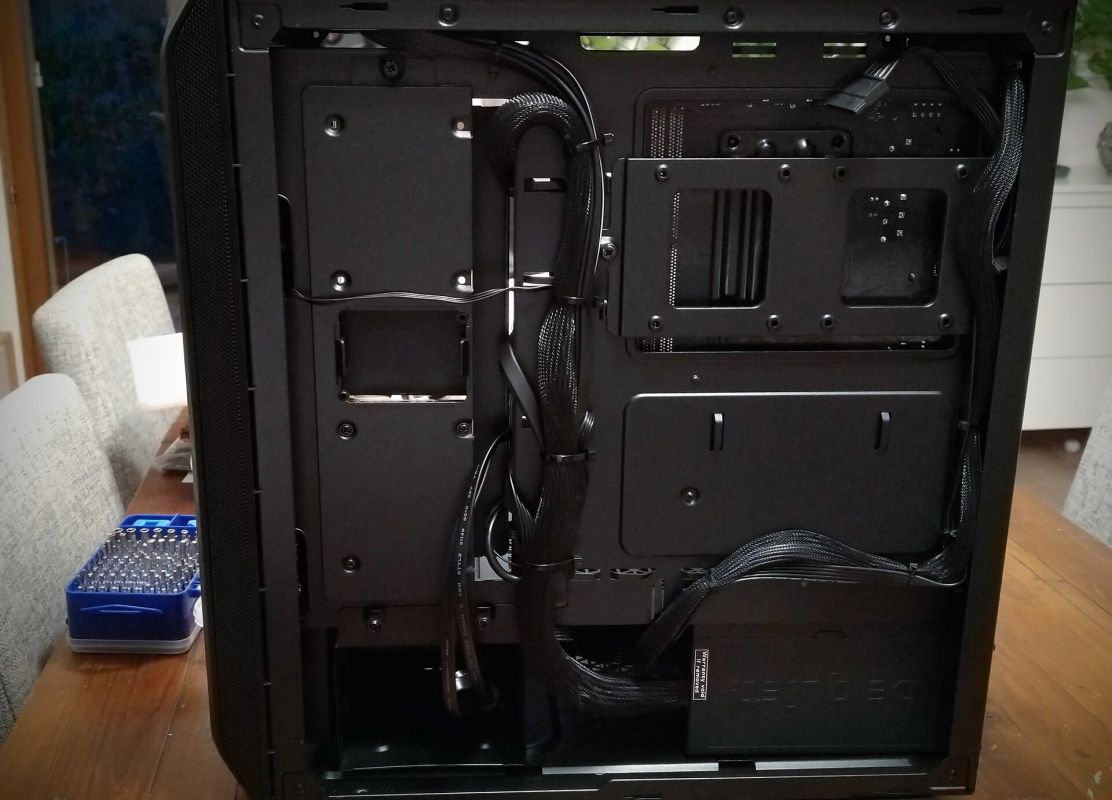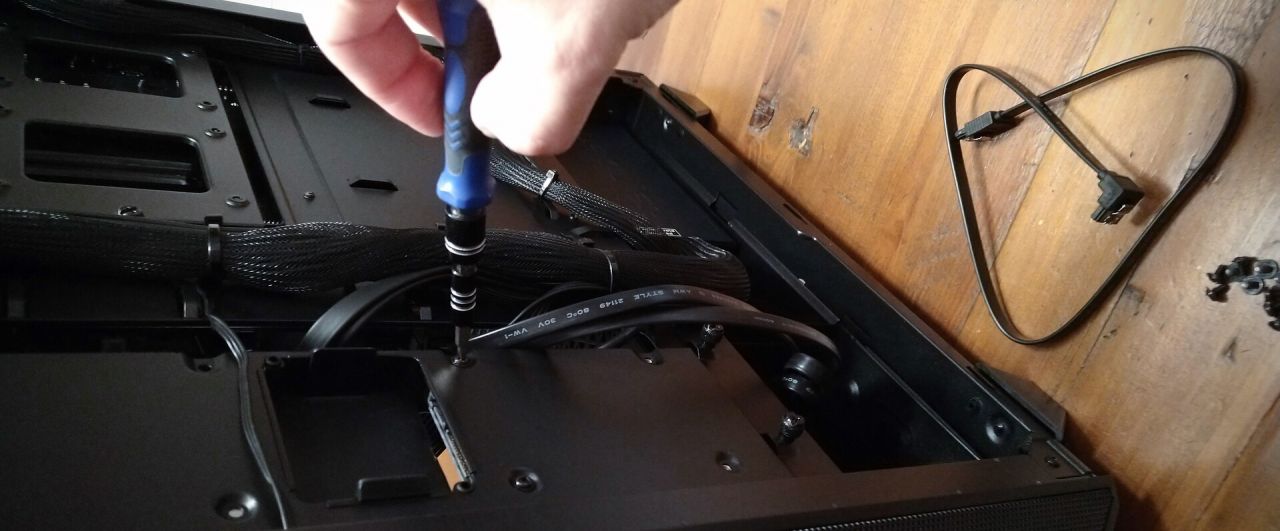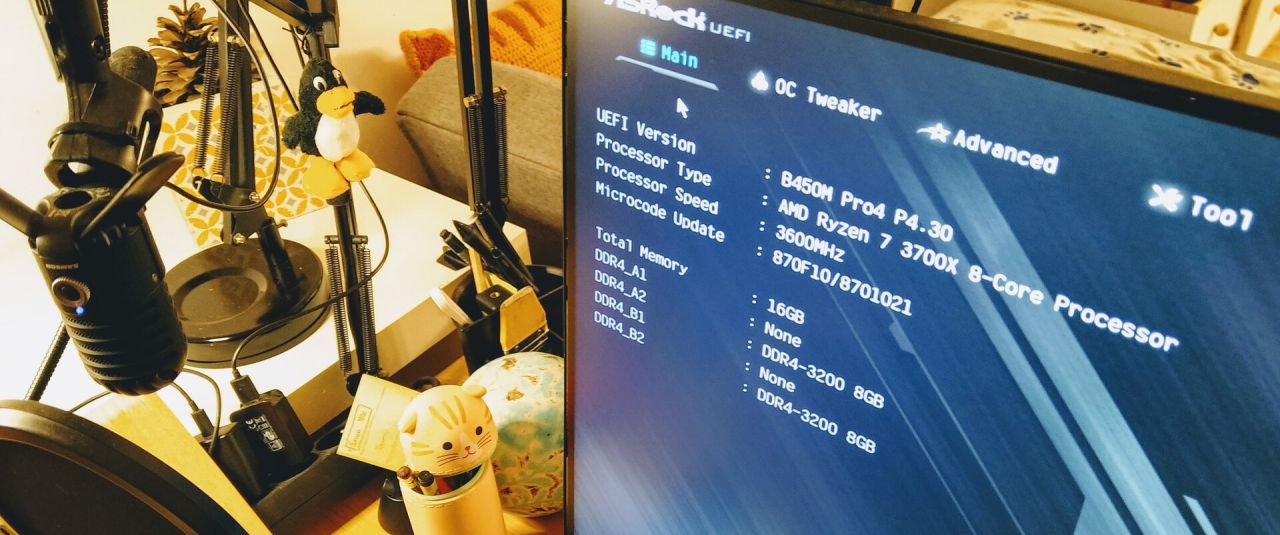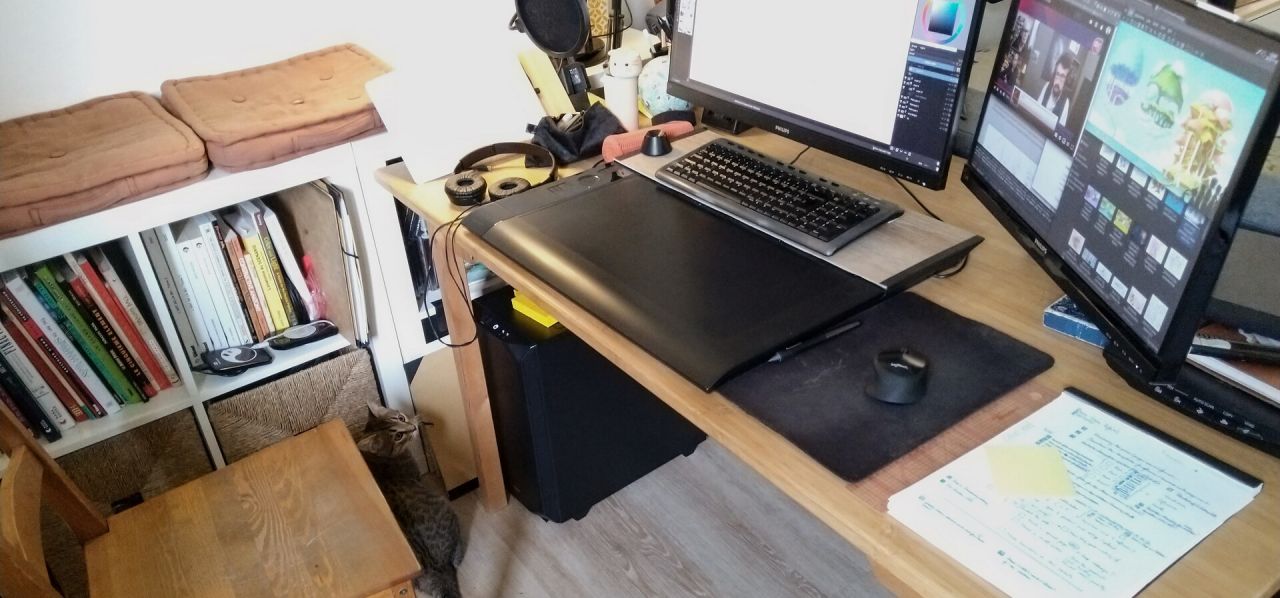Review: My digital-painting workstation PC on GNU/Linux
So here is a review of the computer I received 48h ago. Quick reminder: I was looking for:
- a performant workstation with a focus on 2D Computer Graphics (Krita/Inkscape/Scribus)
- Good for multi-monitor setup, video editing, a bit of Blender 3D.
- Running GNU/Linux with minimal proprietary driver (no Nvidia proprietary driver)
- No 3D gaming: this a PC for work only.
- Low budget for a workstation: 1100€ (~$1300)
So, following your feedback two weeks ago, I decided to build a custom one.
Specifications:
I bought it on LDLC, a French online computer eShop with a interface to select each part and build the PC. (I wanted to avoid Amazon at all cost, read this and you'll get why...)
Here is what I took:
- CPU: AMD Ryzen 7 3700X
- Motherboard: Asrock B450M-Pro4
- Ram: 4x8GB G.Skill DDR4 @ 3200Mhz
- GPU: Sapphire Radeon RX 5500 XT 8GB
- Case: Bequiet! Pure Base 500
- CPU/Fan: Bequiet! Pure Rock 2 Black
- PowerUnit: Corsair RM850x 80 PLUS Gold 850 Watts.
2022 update: Ram updated! I had only 2x8GB when I purchased. In 2022, I received another 2x8GB G.Skill, thanks to a donation.
2023 update: PSU updated! It was originally a "Bequiet! Pure Power 11, 600W 80+Gold" when I purchased. In 2023, I replaced it: the PSU was worn out, too much USB power required too and the CPU and GPU started to report errors.
I took it without operating system and without storage: I already had 2 x 500GB SSD from my previous PC. I also purchased two services: mounting the PC and updating the BIOS of the motherboard (I figured they would do a better work than what I could do and price was attractive). All in all it was slightly over my initial budget of 1000€ with ~1100€ (~$1300).
Changing my previous PC −a Dell Vostro with a i7-870 8x2.93Ghz CPU and a Nvidia 650GTXTi bought in 2010, 10 years of work from Sintel to all Pepper&Carrot!− was necessary and urgent: I couldn't power it anymore without disconnecting all USB. My Nvidia card started also to get badly supported by recent proprietary Nvidia driver (their driver, their choice). Also, no USB 3.0 because 2010 and I started to get crash each time I was recording and painting at same time...
Hardware: a silent and beautiful PC
Assembly time, shipping and delivery went fine despite France being re-confined(COVID19). The unit had many protections: including inside the computer so nothing could float inside the case.
The "Bequiet! Pure Base 500" PC case is probably the best PC case I ever owned (and I owned a lot since my first PC, a 486DX in 1993). I also worked as a designer of PC case around 2005 and handled a lot of hardware in my hands at that time. All inside is painted in black, no sharp metal and many slot, holes, removable part to customise it a lot. Only a single issue: the position of the power button: not designed by someone ever owning a kitten. I'll have to protect it with an extra piece of plastic. (Update thanks to a comment: it's possible to deactivate the effect of the button in Plasma/KDE: System Settings > Power Management > Energy Saving > Button events handling "When power button pressed" change it to "Do nothing" ...)
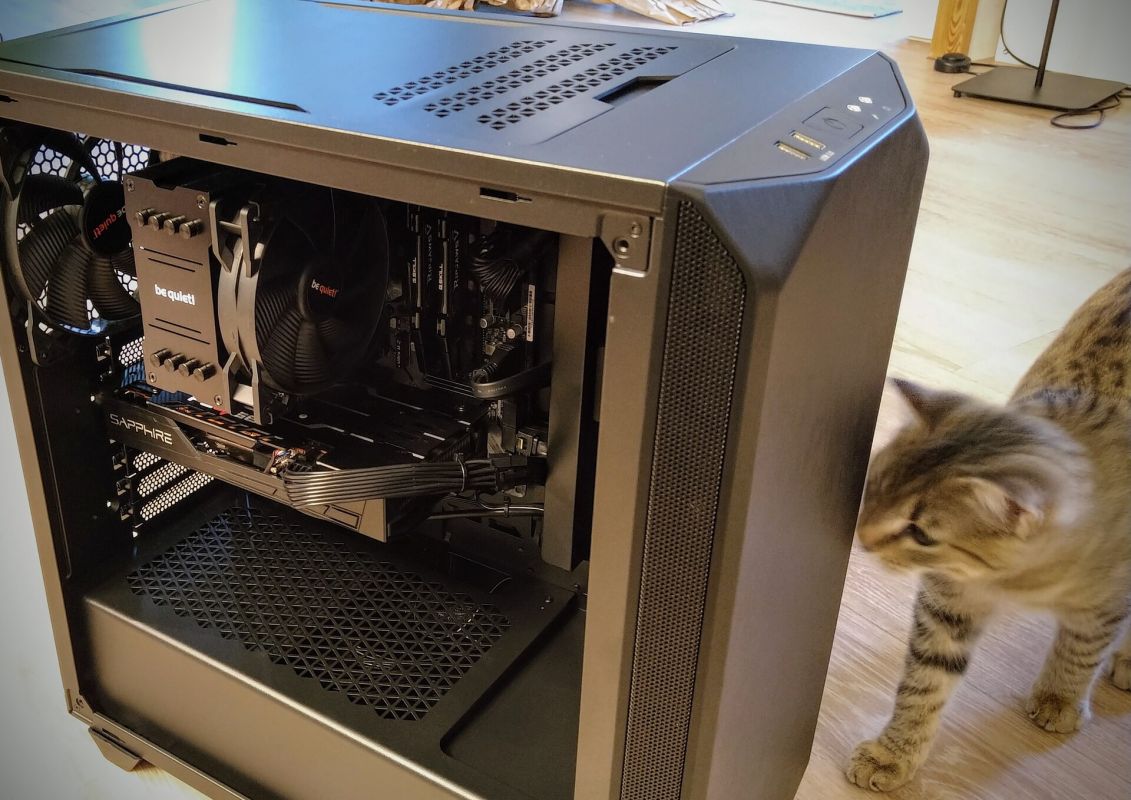
my young kitten curious about the PC
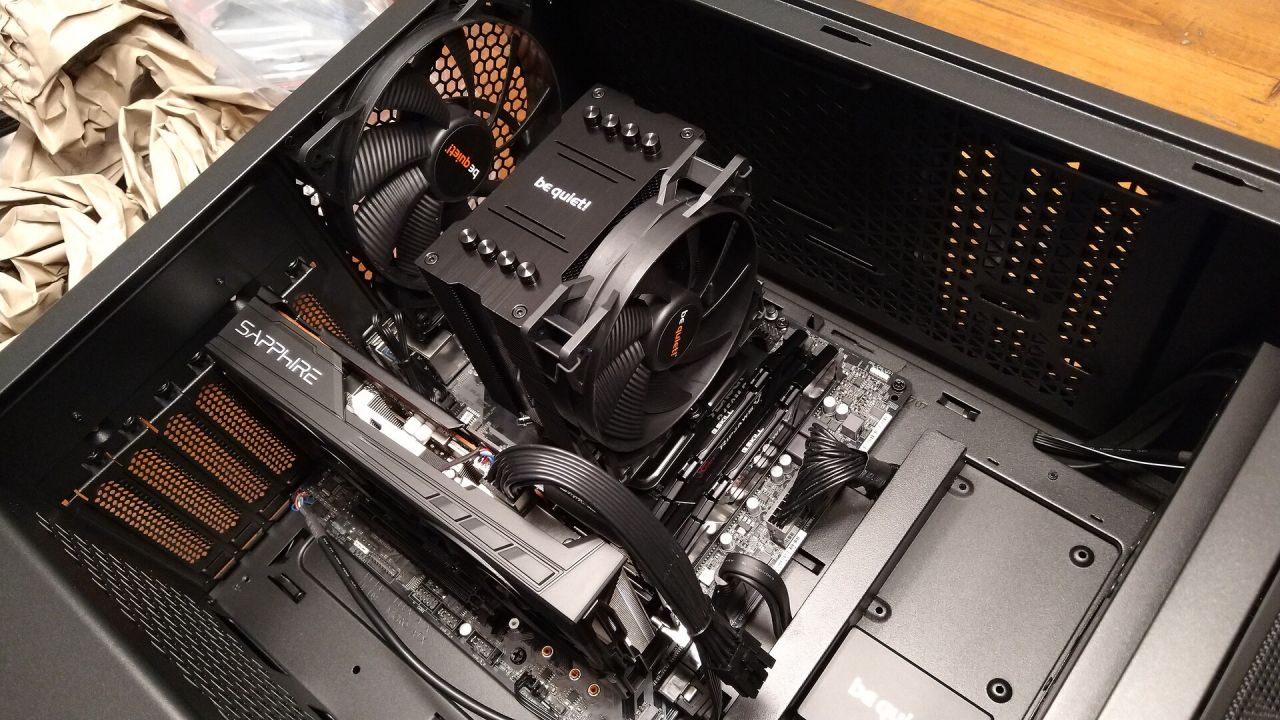
an overview of the motherboard with the components
I'm really happy by the quality of the build made by LDLC team: all done very cleanly with perfect cable management.
I was happy I took this option, because I only had to take my screwdriver for mounting my two SSD. The case had two very cool slot for the drive, positioned into symmetry. With the all black rendering inside the computer; it looks so good!
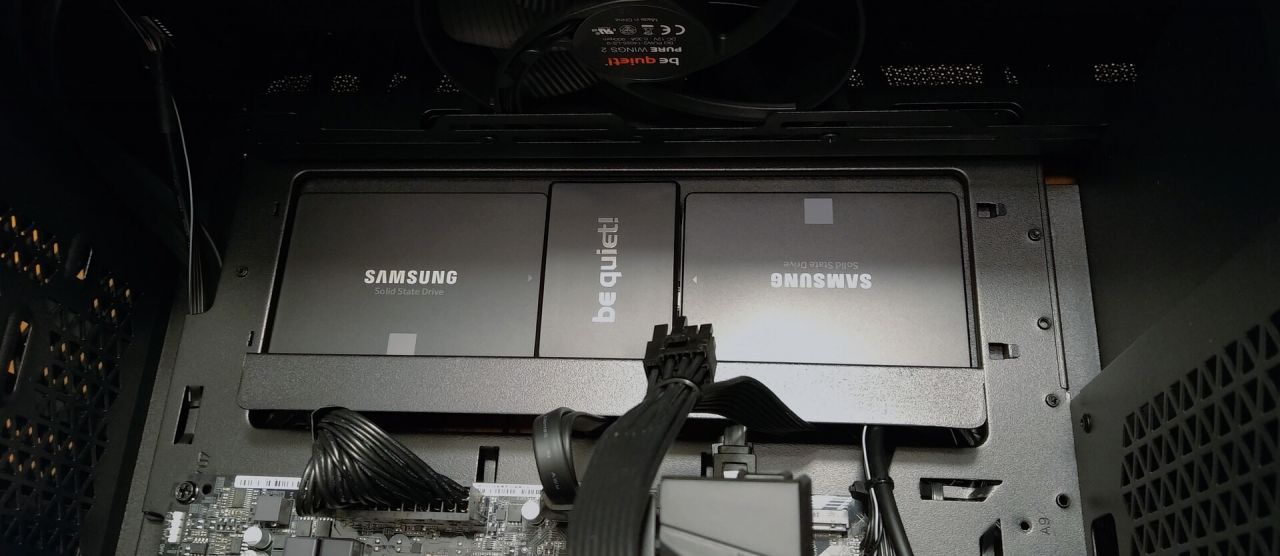
good design for the SSD inside this case
Once mounted, the first run was so silent that I thought the PC wasn't running. That's probably because I was used of the sound of airplane from my previous PC.
After a brief control on the UEFI (good graphic user interface Asrock), I connected a pen drive USB with a Kubuntu 20.04 GNU/Linux system. That's the system I documented in my series Linux for a digital-painting workstation. All was directly working out-of-the-box perfectly from the live session: video, dual monitor, graphic tablet, audio. Happiness!
AMD GPU: the myth of being "easy and open-source"?
Ten years ago, AMD GPU cards for a GNU/Linux system was the worst option you could take for graphism because of bad drivers. But over the last years, many rumors spread about how easy, open-source and great the new generation was. Well, I had a very confusing experience so far on how to setup it correctly!
The documentation is not really easy to follow. I quickly saw that the discrete GPU card require an additional installation to work with Blender. I then went to the official Blender documentation and they advice the ROCm driver while Arch Wiki advice the ProRender plugin. The ProRender pluging being only for Blender 2.8x; I decided a bit blindly to install the ROCm. Installing ROCm is far more complex than installing Nvidia proprietary driver (not packaged by the distro?) and require more than 6 command lines, three reboots and require to stick to a set of distro (Ubuntu LTS is fortunately part of them). Not a big problem to me, but it worth being mentioned as it contrast a lot, imo, with the 'easy' reputation it has.
After I finished the install and switched the Kwin compositor to use OpenGL 3.1: my glitches were gone and I could play with Blender 2.90.1. I can access rendering with OpenCL on the benchmark but I can't use Cycle with the GPU (all models remain gray). On other things I noticed related to the GPU: VLC crashes , glconv_vaapi_x11 gl error, because of a known bug in Mesa. I saw it was open since a year and Mesa had over 2500 open bugs... So, I switched to use Celluloid video player, too bad; I had my habits with VLC... Another small glitch: the tablet configurator of Plasma can't remember the monitor where the tablet was mapped after sleep or lock (no problem with old Nvidia); I'll have to report that and workaround in the meantime using bash script and command-line xsetwacom for now...
So all in all, this first 48h with the "Sapphire Radeon RX 5500 XT 8GB" I can tell the user experience is not as promising as it was meant to be but not dramatic or bad either. In the end, I have good behavior in all my 2D software with OpenGL canvas acceleration and I can continue to do my mockup with Blender Eevee. That's ok for my needs.
If you have more information about AMD GPU config and recommendation to get the best out of it, please share in the comments.
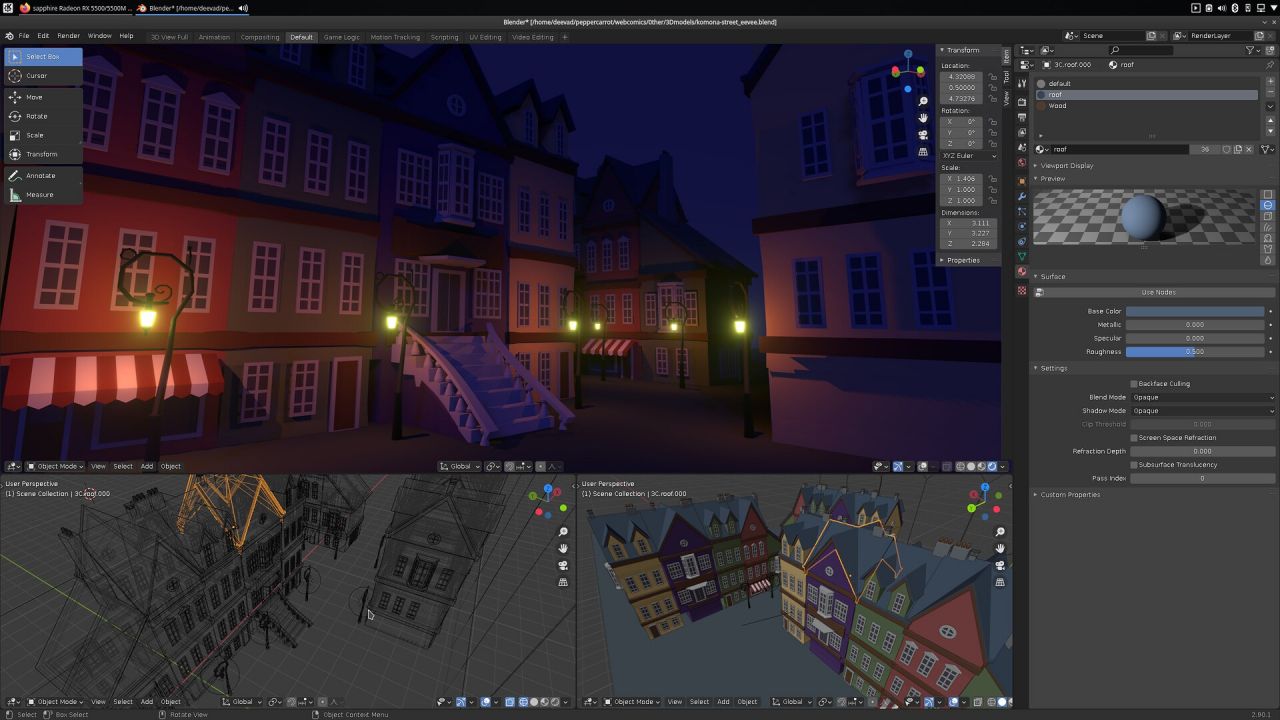
Screenshot, Blender: I use 3D to sketch background in my webcomic; I paint-over them later with Krita
Performances:
In overall, it's really better than what I expected and I tried to list here the change I could notice:

AMD Ryzen 7 3700x in action: 8 core, 16 threads, silent
Krita:
It really improved everything!
- Complex and large brushes runs smoothly on 4K documents (without Instant Preview).
- I can screen-record and paint at same time without feeling a performance slowdown.
- No glitch or micro lag with Instant Preview, I might start to use it.
- Instant refresh on color adjustement filters (eg. while moving sliders on HSV filters) No time to notice tiling.
- I can paint under 3 filter layers (Color Balance+Color Curves+Sharpen) without any slowdown.
- No more slowdown with ColorSmudge brush engine.
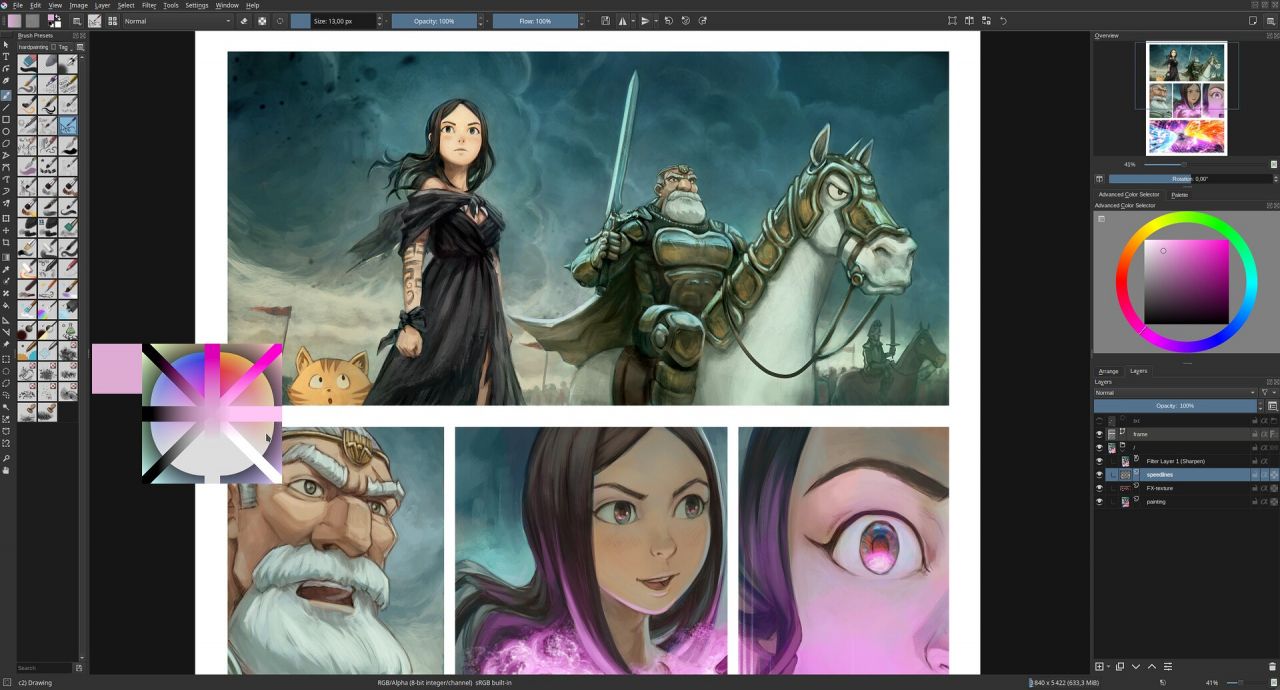
Krita screenshot with a page of my webcomic
- GMIC filters (multi-threaded) now renders very fast.
- Duplicate layers, merging layers, undo happens instantly.
- Transform (Ctrl+T) are super fast to bake.
- Liquify deformation is much improved, not smooth over a square of 2K by 2K but on selection way smoother and interactive.
- Multibrush (mandala mode :P) has no slow-down.
accelerated x6 video: painting with multibrush, under three filter layers (color-balance, invert, edges detection) on a 4K document. Not specially smooth but no issues. Impressive!
On the downside, start-up time wasn't improved so much and colorize-mask refresh too... I also might become a useless beta-tester for performances because I'll have hard time to feel issues that adds a bit of slowdown (on my previous PC, I was very sensitive to this type of changes).
Inkscape:
Just the SVG rendering on canvas feels smoother, but this is huge.
Pepper&Carrot renderfarm:
Rendering from scratch episode 7 "The wish" (1679 files to render, 43 langs, parrallal process: Inkscape CLI rendering, and Imagemagick rendering).
Previous PC, Intel Core i7-870: 23m28s
New PC, AMD Ryzen 7 3700X: 3m55s
Blender Benchmark:
CPU BMW scene, 3D rendering (less is better):
Previous PC, Intel Core i7-870: 27m41s
New PC, AMD Ryzen 7 3700X: 2m38s
GPU BMW scene, 3D rendering (less is better):
Previous PC, Nvidia GTX 650Ti(CUDA): 9min35s
New PC, Sapphire Radeon RX 5500 XT 8GB(OpenCL): 2m47s
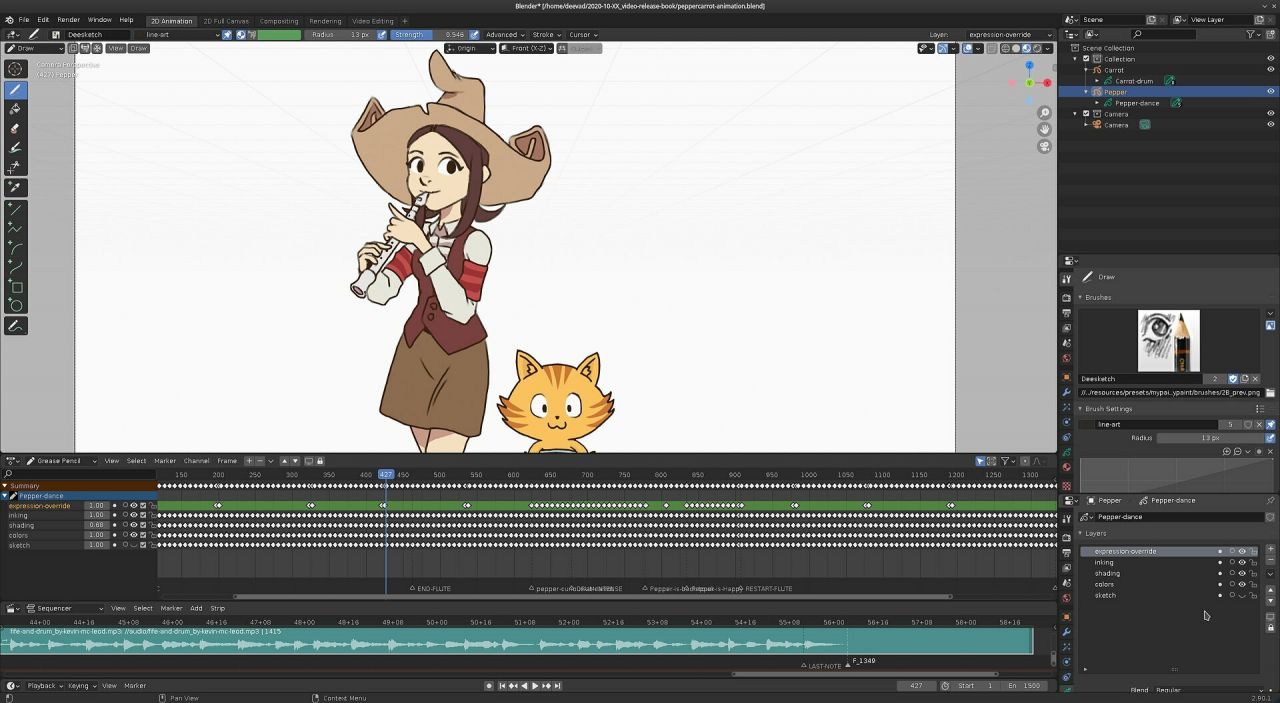
Blender screenshot: a recent grease-pencil animation I made
On the downside:
- Drawing on canvas with GreasePencil is still not smooth for me; especially on scene with many objects/frames.
- No big gain about Blender video sequence editor, playback is still slow and the frame by frame rendering too.
Scribus:
- Scrolling books with many hi-res pictures and loading the file is faster.
- Export to PDF is faster too (I forgot to save a render time on my previous PC).
Kdenlive:
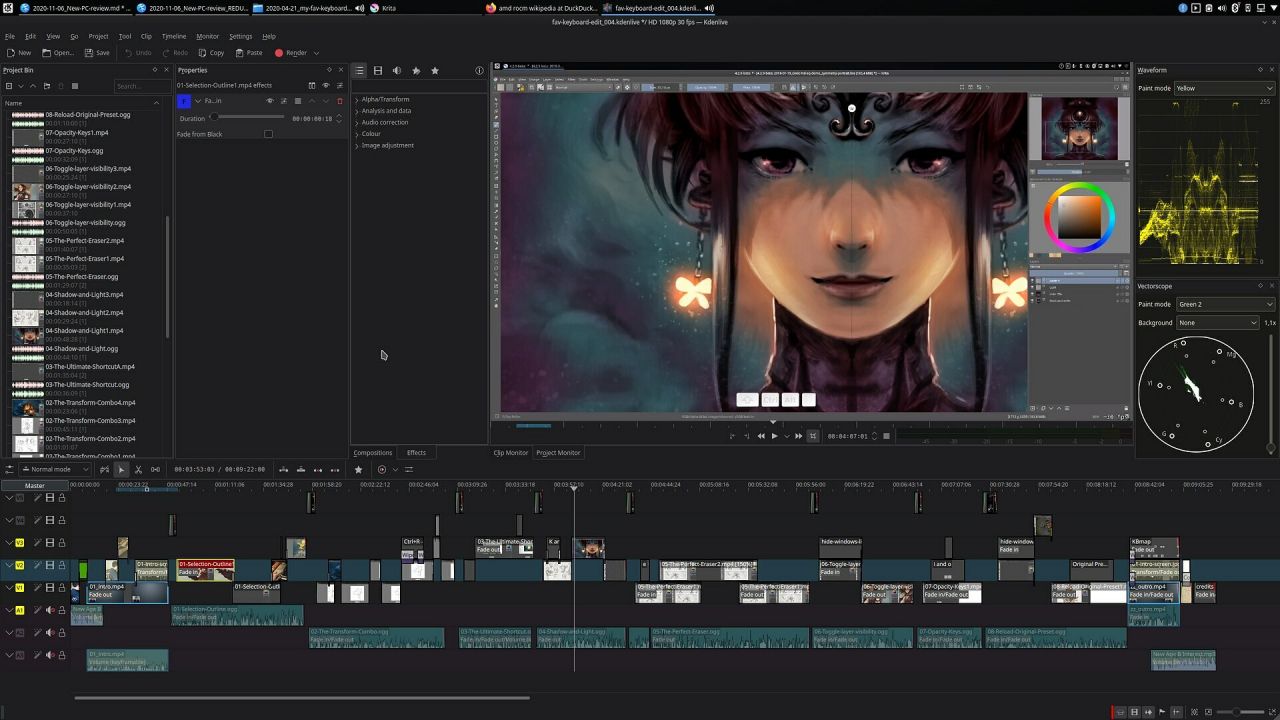
Kdenlive screenshot: while video editing one of my tutorials
A big surprise; playback of my video editing is now WYSIWYG. 30fps for the most part and transitions/effects fall to 18fps but totally acceptable while editing.
Rendering also improved a lot, eg. my 42min long video tutorial about Color Adjustement (1080p@30fps):
Previous PC: 56m41s
New PC: 06m39s
Other:
- Plasma: fading animation, windows movements and desktop effect are very smooth.
- Dolphin file explorer: folders with 3000 picture scrolls and render large thumbnail on the fly.
- Nomacs image browser displays large pictures at the speed of light!
Conclusion
I only painted 7h with this PC, made a bit of video editing, recorded a bit; but this is already beyond what I expected for the task this PC is meant to do. I hope it will have a long life!
The Pros:
- Good CPU (performances).
- Silent and beautiful PC case.
- Relatively cheap combination of hardware.
- Compatible out of the box.
- Krita, Inkscape and Kdenlive performances
The Cons:
- the AMD GPU easy open-source myth
- Power button on the case
I hope this review/overview will help you if you have the same type of problem I had for picking a PC!

